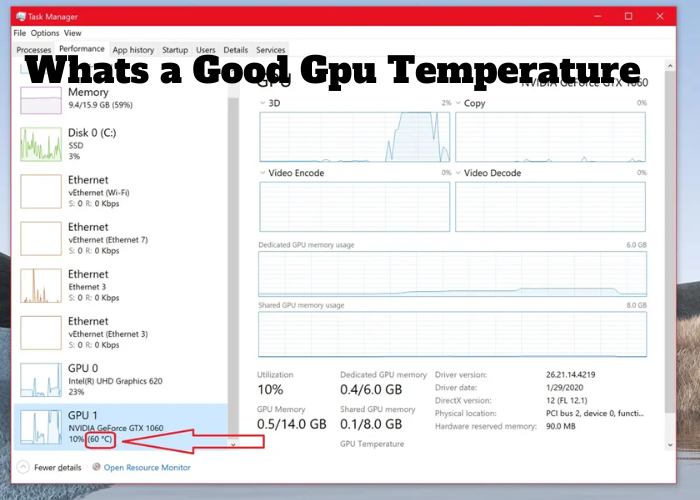When it comes to graphics cards, one of the most important factors you need to take into consideration is temperature. In this blog post, we’ll share what a good GPU temperature is and how you can maintain it. Plus, we’ll discuss some of the best ways to keep your graphics card from overheating. So if you’re looking for tips on how to keep your GPU cool, read on!
What Is a Gpu Temperature and How Is It Measured
A GPU temperature is a measure of how hot the Graphics Processing Unit (GPU) is. The GPU is a chip on a computer’s graphics card that is responsible for rendering images. The temperature of the GPU can be measured using a variety of methods, including thermal sensors and infrared cameras. Thermal sensors are placed on the surface of the GPU and measure the heat being emitted by the chip. Infrared cameras can be used to measure the temperature of the GPU from a distance. By monitoring the temperature of the GPU, computer manufacturers can ensure that the chip does not overheat and damage the graphics card.
What Are the Acceptable Temperatures for Gpus
GPUs are sensitive to temperature changes and can be damaged by overheating. The acceptable temperature range for most GPUs is 0-85 degrees Celsius. However, some high-end GPUs can operate at temperatures up to 95 degrees Celsius. If the temperature of a GPU exceeds 85 degrees Celsius, it is at risk of permanent damage. In order to avoid overheating, it is important to ensure that the GPU is properly ventilated and that the ambient temperature is within the acceptable range. Additionally, it is important to monitor the GPU’s temperature regularly and take steps to cool it down if it begins to overheat. By taking these precautions, you can help protect your GPU from damage caused by overheating.
How To Lower Your Gpu Temperature
For PC gamers, one of the most important aspects of their rig is the graphics card. These cards can often get very heated, which can lead to performance issues. Fortunately, there are a few things that you can do to help keep your GPU cool. First, make sure that there is good airflow inside your case. You can do this by adding additional fans or by using a case with good ventilation. Another way to improve airflow is to use a car after market GPU cooler. These coolers attach to your graphics card and help to dissipate heat away from it. Finally, you can also lower your GPU temperature by regularly cleaning the dust out of your computer case. By taking these steps, you can help to ensure that your graphics card stays cool and performs at its best.
What To Do if Your Gpu Exceeds Its Safe Operating Temperature
If your GPU exceeds its safe operating temperature, there are a few things you can do to cool it down. First, make sure that your case has good airflow and that all of the vents are clear. You may also want to consider investing in a higher-quality cooling system. Additionally, you can try overclocking your GPU to improve its cooling efficiency. Finally, if you’re still having trouble keeping your GPU cool, you can always reduce its clock speed or voltage. By taking these steps, you can help ensure that your GPU stays within its safe operating temperature range.
